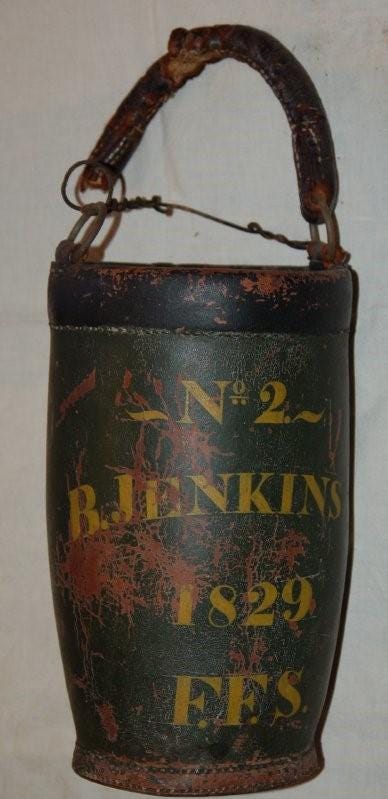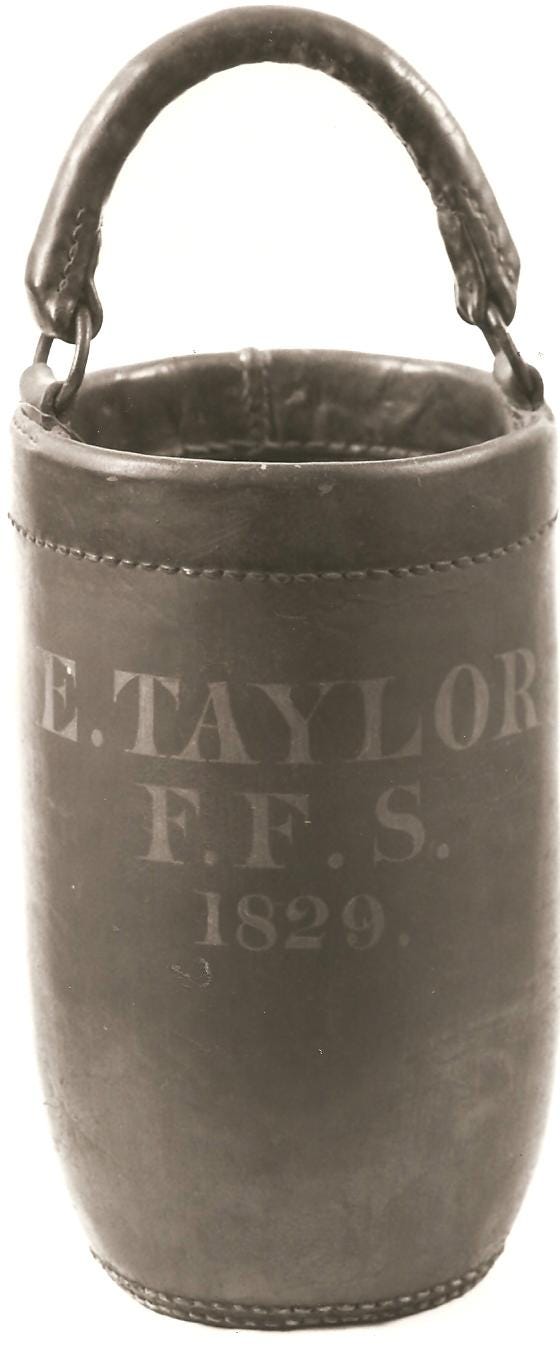ACHC #2016.059.1
Fires have always been a devastating problem. On January 7, 1608, Captain John Smith recorded the first structure fire in the Jamestown Colony. The fire burned most of the newly established settlement. He wrote, "Most of our apparel, lodging and private provisions were destroyed...".
For the next 200 years, Colonial America’s fire-fighting methods consisted of a “bucket brigade.” Bucket brigades required two lines of people stretching from the nearest water source, well, pond, or river, to the burning structure. Fire buckets were filled with water and passed down one line to the fire. The empty buckets were passed down the other line, to be refilled.
Throwing water from a bucket isn’t easy. Needless to say, it wasn’t the most effective way to quench a fire. Many homes burned to the ground. The goal was to slow down the fire enough for people to have time to enter the burning building and save whatever possessions were inside and also to keep the fire from spreading to other structures.
Fire buckets, were usually leather and flat bottomed. A bucket was painted with the owner’s name or initials. Standard buckets held about 2½ to 3 gallons (about 20 pounds) of sand or water. When a fire alarm was given in the local community, people would throw the buckets out for the brigade to use. After the fire was over, the buckets were carried to the town green or nearby church to be sorted out and claimed.
ACHC #1979.084.1
In the early 1800's, like many New England communities, Andover had firefighting societies. These were groups of volunteers who banded together to fight neighborhood fires. Dues were collected, and members had to abide by the rules: attend meetings, respond to the fire alarms. supply their buckets, and help fight the fires. Failure meant loss of membership and worse – others would not help you if you had a fire!
The Friendly Fire Fighting Society was the volunteer group that covered the Blanchard House and the south end of town. That’s why the fire bucket hanging in the history center's front stairway has F.F.S. painted on it along with E. Taylor, the second owner of the house. At the time, the F.F.S. covered a large area. B. Jenkins, of the other bucket, lived on Boston Road near what is now Rt 28 and Rt.125
ACHC #2018.002.1
Not all fire buckets were leather and flat on the bottom. This is a galvanized iron and cast-iron bucket with tapered sides and a rounded bottom. It is thought to have been used in the Ballardvale Mills, Andover.
Why do some fire buckets have round bottoms? Theories vary. One has to do with water dynamics, that a stream of water coming from a more cylindrical, round bottomed bucket goes further when thrown. The other, more common answer, is that buckets that are rounded aren’t likely to be “borrowed” for any other purpose and then not found when they are truly needed!
By the 1850s, as communities grew denser and buildings taller, bucket brigades were no longer useful. A better way was needed. Enter the "modern" fire engine or tub pumper. The one pictured here, the Hunneman Tub Pumper, made in 1856, and used in Ballardvale is also in our collection.
ACHC #130.049.1
Do you have a story to share?








